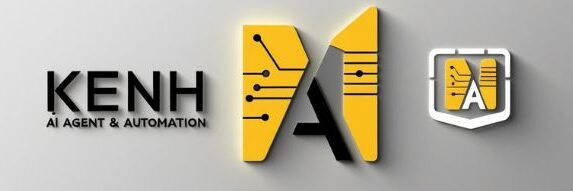AI Workflow Tools You Should Know in 2025
Introduction
AI-driven workflows are the backbone of modern automation. In 2025, teams are leveraging sophisticated tools to streamline tasks, integrate services, and deploy autonomous agents. This article highlights the top AI workflow tools in 2025, how they work, and why they’re reshaping the way businesses operate.
What is AI Workflow Tools You Should Know in 2025?
These are platforms, frameworks, and orchestration layers that allow developers and non-technical teams to build, manage, and deploy AI-driven processes. Unlike traditional automation, modern AI workflow tools leverage LLMs, APIs, and real-time decision-making to build dynamic, intelligent workflows.
Key Components of Modern AI Workflows
| Component | Role |
|---|---|
| LLMs | Provide natural language understanding and generation |
| Agents | Execute tasks, make decisions, connect APIs |
| Orchestrators | Sequence and monitor multi-step workflows |
| Tools/API Integration | Extend capabilities via external services |
| Memory Systems | Maintain context, history, or user preferences |
Real-world Applications of AI Workflow Tools
Marketing: Automated content writing + social media scheduling (e.g., ChatGPT + Zapier + Buffer)
Customer Support: Helpdesk ticket routing + chatbot triage (LangChain + Freshdesk API)
Recruiting: Resume filtering + interview scheduling agents (AutoGPT + Calendly + Notion)
Operations: Document parsing + task assignment (Make + Claude + Airtable)
Top AI Workflow Tools to Know in 2025
1. Make (formerly Integromat)
Type: No-code automation
Use: Visual workflows connecting 1,000+ apps
Why: Powerful filters, routers, and low learning curve
2. Zapier AI
Type: Automation + LLM agent layer
Use: Automate multi-app workflows, now with AI logic
Why: Combines ease of use with AI agent triggers
3. LangGraph
Type: Python framework for agent workflows
Use: Manage branching logic and memory for LLM agents
Why: Great for building robust multi-agent systems
4. CrewAI
Type: Open-source agent framework
Use: Assemble collaborative agents with roles and tools
Why: Modular and lightweight with easy deployment
5. AutoGen (Microsoft)
Type: Agent orchestration library
Use: Coordinate LLM agents with memory + tools
Why: Scalable, designed for enterprise tasks
6. FlowiseAI
Type: Low-code LangChain GUI
Use: Drag-and-drop workflow builder for agents and tools
Why: Perfect for visual prototyping and non-coders
7. Superagent.sh
Type: Cloud-based AI agent platform
Use: Deploy GPT-powered agents with APIs and DB access
Why: Ready-to-use templates for chatbots, crawlers, support
Case Study: AI Workflow in Customer Support
Problem: A SaaS company needed to reduce support backlog without hiring.
Solution: They used LangGraph + GPT-4 + Zendesk API to create an autonomous support agent.
Results:
60% ticket automation in 3 months
Average response time dropped by 42%
Support team redeployed to higher-value interactions
Challenges and Considerations
Tool Overload: Too many options—teams must pick wisely
Data Privacy: Workflow tools must handle user data securely
Maintenance: Orchestrations require versioning and monitoring
Debugging Agents: Autonomous behavior adds complexity to troubleshooting
Future Outlook
| Prediction | Explanation |
|---|---|
| Unified Agent + Workflow Platforms | Combining logic, memory, and execution into one tool |
| Real-time Collaboration | Multi-agent teams across business domains |
| Context-Aware Flows | Using long-term memory and user preferences natively |
| Autonomous Scheduling & Ops | Agents will self-optimize workflows based on outcomes |
Conclusion
The AI workflow tools of 2025 are not just time-savers—they’re foundational to how teams build, scale, and optimize operations. Whether you’re automating marketing, engineering, or customer success, these tools give you the superpower to do more—with less.
🚀 Want to Build AI Workflows Like a Pro?
Join our recommended AI Mastery Course and learn how to design powerful agents, automate processes, and become AI-fluent in 2025 and beyond.

